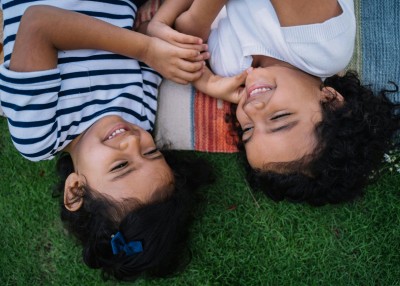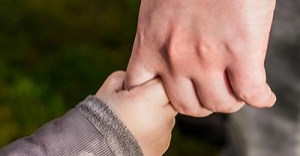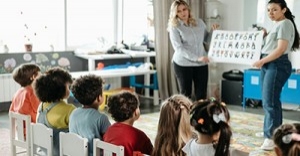Rough-and-tumble play—often called play fighting—is a form of physical, high-energy play that helps children develop social, emotional, and physical skills. It includes activities like wrestling, chasing, tumbling, and playful grappling, but without aggression or intent to harm.
What Is Rough and Tumble Play
Rough-and-tumble play—also known as play fighting—is a form of high-energy, physical play where children engage in activities like wrestling, chasing, tumbling, and playful grappling without aggression or intent to harm.
Key Characteristics
- Physical & Social Interaction: Children engage in vigorous movement while learning social boundaries.
- Non-Aggressive: Unlike real fighting, rough-and-tumble play is cooperative and fun.
- Developmentally Beneficial: Helps children build motor skills, emotional regulation, and problem-solving abilities.
Why Is It Important?
- Promotes Physical Development: Enhances balance, coordination, and spatial awareness.
- Encourages Social Skills: Teaches turn-taking, cooperation, and boundary-setting.
- Supports Emotional Regulation: Helps children manage excitement and frustration in a safe environment.
Why Is Rough-and-Tumble Play Important?
- Promotes Physical Development: Enhances gross motor skills, balance, coordination, and spatial awareness.
- Encourages Social Skills: Helps children understand boundaries, take turns, and resolve conflicts.
- Supports Emotional Regulation: Teaches children how to manage excitement and frustration in a safe environment.
- Boosts Cognitive Growth: Requires problem-solving, strategy, and adaptability.
Benefits of Rough and Tumble Play
Rough-and-tumble play offers a range of developmental benefits for children, helping them grow physically, socially, and emotionally. Here are some key advantages:
1. Physical Development
- Enhances gross motor skills, balance, and coordination.
- Helps children understand their own strength and movement limits, reducing injury risk.
- Builds agility and body control, preparing them for sports and other physical activities.
2. Social & Emotional Growth
- Encourages turn-taking, cooperation, and boundary-setting.
- Helps children read social cues, such as facial expressions and body language.
- Supports emotional regulation, teaching children how to manage excitement and frustration.
3. Cognitive & Problem-Solving Skills
- Requires strategy and adaptability, fostering problem-solving abilities.
- Encourages risk-taking in a safe environment, helping children build confidence.
- Strengthens nonverbal communication, improving social interactions.
4. Parent-Child Bonding
- Rough play with parents strengthens trust and attachment.
- Helps children develop resilience by learning how to handle challenges.
How to Ensure Safe Rough-and-Tumble Play
Supporting safe rough-and-tumble play ensures children can engage in high-energy physical interactions while maintaining safety and respect. Here are some key strategies:
1. Establish Clear Guidelines
- Teach children to recognize the difference between playful interaction and aggressive behavior.
- Set rules like "Stop if someone says stop" and "Keep hands open, not fists".
2. Create a Safe Play Space
- Use soft surfaces like mats or grassy areas to minimize injury risk.
- Ensure adequate space for movement without obstacles.
3. Encourage Communication & Consent
- Teach children to check in with their playmates: "Are you okay with this?"
- Reinforce respect for boundaries and the ability to say "I need a break."
4. Maintain Active Supervision
- Observe interactions to ensure play remains friendly and balanced.
- Step in if play escalates beyond safe limits.
5. Foster a Culture of Safety & Support
- Normalize rough-and-tumble play as a healthy part of development.
- Encourage self-regulation by helping children recognize their own limits.
Examples of Rough and Tumble Play
Here are some examples of rough-and-tumble play that help children develop physical, social, and emotional skills:
Classic Rough-and-Tumble Play Activities
- Wrestling & Play Grappling: Children engage in friendly wrestling while learning boundaries and self-regulation.
- Chasing Games: Activities like tag encourage movement, agility, and social interaction.
- Rolling & Tumbling: Rolling down grassy hills or tumbling on soft mats builds coordination.
- Piggyback Rides: Strengthens balance and teamwork.
- Tickle Wars: Encourages laughter and bonding while teaching limits.
Structured Rough Play Games
- King of the Mountain: Children climb and playfully defend a small hill or structure.
- Red Rover: A group game that involves running and breaking through linked arms.
- Freeze Tag: Combines chasing with quick reflexes and teamwork.
- Animal Play: Pretending to be different animals, like lions wrestling or monkeys climbing.
Safe Rough-and-Tumble Play Guidelines
- Set Boundaries: Teach children to stop if someone says “stop.”
- Use Soft Surfaces: Grass, mats, or padded areas reduce injury risk.
- Encourage Communication: Help children express when they need a break.







 As an Educator in Australia, your pay rate falls under the Children’s Services Award 2010. This award states the minimum amount that an employer can
As an Educator in Australia, your pay rate falls under the Children’s Services Award 2010. This award states the minimum amount that an employer can When working as a qualified Early Childhood Teacher (with a university degree) within a service, your rate of pay will come from the Educational Services
When working as a qualified Early Childhood Teacher (with a university degree) within a service, your rate of pay will come from the Educational Services When working as a Diploma Qualified Educator your pay rate is from the Children's Services Award 2010. This Award states your minimum rate of pay
When working as a Diploma Qualified Educator your pay rate is from the Children's Services Award 2010. This Award states your minimum rate of pay When working as a Cert 3 Qualified Educator, your pay rate is from the Children's Services Award 2010. This Award states your minimum rate of
When working as a Cert 3 Qualified Educator, your pay rate is from the Children's Services Award 2010. This Award states your minimum rate of Educational Leaders play a crucial role in their early childhood service by ensuring that the educational program aligns with best practices and supports the holistic
Educational Leaders play a crucial role in their early childhood service by ensuring that the educational program aligns with best practices and supports the holistic In early childhood education and care, ratios are more than a technicality—they are a frontline safeguard. Every child deserves responsive supervision, emotional connection, and developmental
In early childhood education and care, ratios are more than a technicality—they are a frontline safeguard. Every child deserves responsive supervision, emotional connection, and developmental With the new national child safety reforms kicking in on 1 September 2025, early childhood services like yours have a real opportunity to lead the
With the new national child safety reforms kicking in on 1 September 2025, early childhood services like yours have a real opportunity to lead the Here’s a comprehensive Mobile Phone and Smart Watch Policy tailored for early childhood education and care (ECEC) services in Australia, aligned with the latest 2025
Here’s a comprehensive Mobile Phone and Smart Watch Policy tailored for early childhood education and care (ECEC) services in Australia, aligned with the latest 2025 The Sea of Fish Challenge is a national initiative that invites children, educators, families, and communities to create and display fish artworks as a symbol
The Sea of Fish Challenge is a national initiative that invites children, educators, families, and communities to create and display fish artworks as a symbol Across the early childhood education and care sector, educators are sounding the alarm: current staffing ratios are insufficient to deliver safe, meaningful, and developmentally appropriate
Across the early childhood education and care sector, educators are sounding the alarm: current staffing ratios are insufficient to deliver safe, meaningful, and developmentally appropriate


